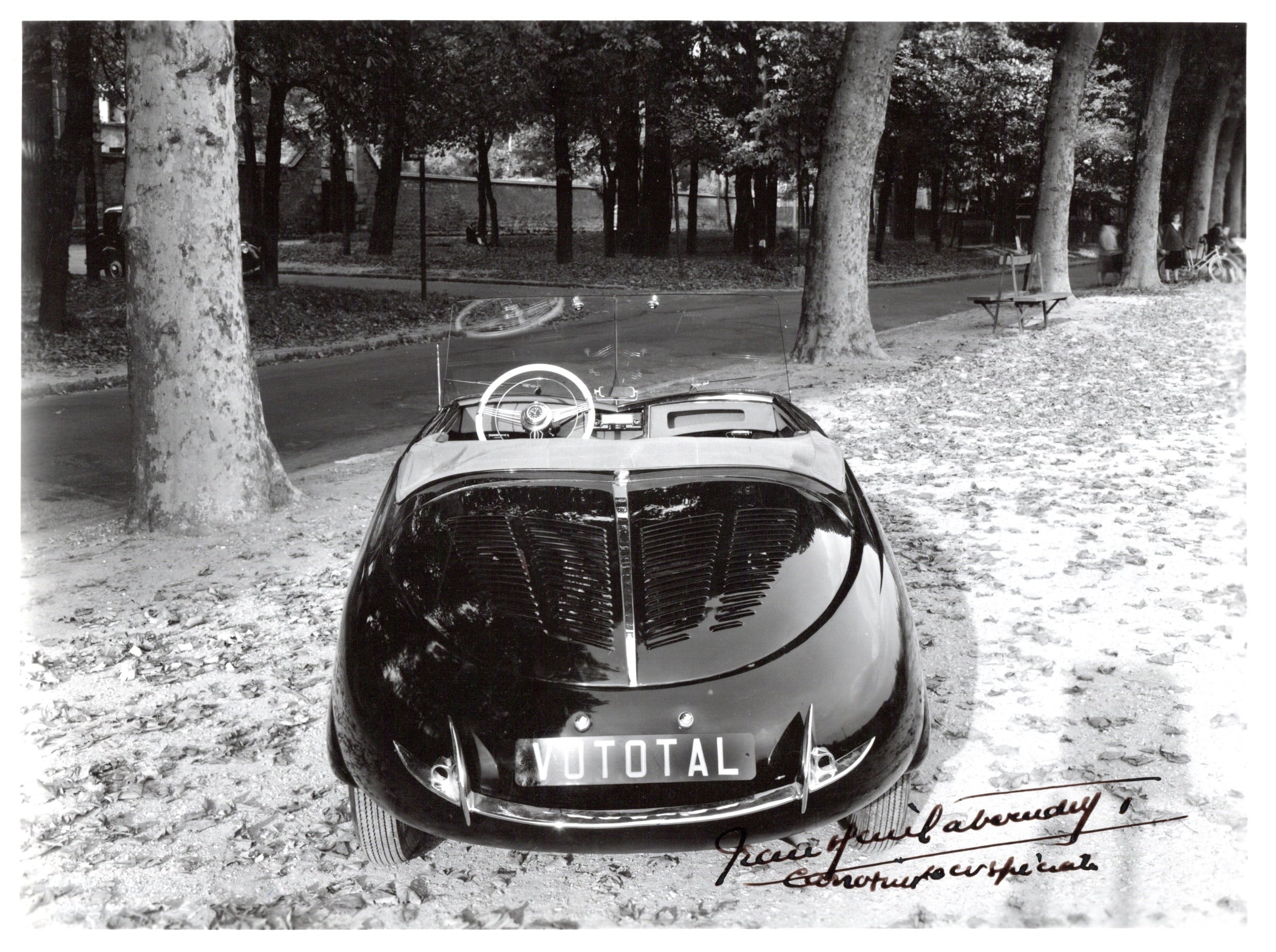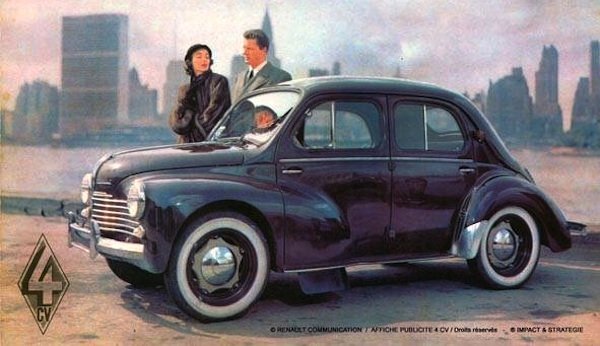Renault 4cv
I do not collect documents, photos, or indeed anything that does not give me everyday pleasure. If I go into my desk drawer and see a pile of papers not looked at for over a couple of years, I unceremoniously dump them straight in the bin. On the odd occasion that I decide to sift through them, my sentiment is almost always right. Bin them! If photos or documentation could be of value to others, donate them. Some years ago I was happy to give a large number of car-related books to OMC. Why? They did not correspond to my work, nor to my fairly defined passion of automobiles.
The Renault 4CV (four fiscal horsepower) was designed during the war and started production in 1947. Renault was a state owned company at the time, and France wanted a ‘people’s car’ similar to the Volkswagen Beetle. It was similar in conception, with seating for four people, and a small economical engine in the rear. In 1945, Ferdinand Porsche, the conceptor and designer of the Beetle, was a prisoner of war in France. He was called in by the State to finalise the design and production of the Renault 4CV. The car was a success, and the first French car to be built in excess of one million examples.
Despite the fact that I consider myself to be half French, those of you who know me will be wondering why I am writing about this car. In a fit of recent boredom, I delved deeply into some drawers where I had, for some reason in the past, salted away documents that should be conserved. And I came across some photos of a very special Renault 4CV. A car that I would be proud and delighted to own.
When Hitler took Paris, he gave strict orders to his troops. Do not damage this beautiful city. So unlike other European capitals, it survived intact, with all its inherent beauty. But most of the inhabitants were beaten to the ground, simply surviving. Hitler was akin to the Corona Virus, but it took six whole years to snuff him out. France was on its knees. The new government was largely Communist, but a number of wealthy families had survived, and some, like in this current pandemic, had thrived.
So let us imagine a wealthy Parisian lady just after the war. Her friends, whom she meets for lunch at hip restaurants on the left bank, are driving new Renault 4CVs. Either they can’t afford a new Delahaye, or they prefer to be discreet. But Isabelle lives in a large house on Avenue Foch, has a wealthy husband, and servants to look after her. She wants to drive something chic, but doesn’t want to offend her entourage. So she breaches the subject with her husband one evening while they are sipping cocktails. George had just ordered a Delage with special and somewhat flamboyant bodywork by the renowned French coachbuilder, Labourdette. So he suggests that she run with the idea of the small Renault, but they ask Labourdette to clothe it. Isabelle worked on a few rough sketches over the weekend, and the following week, they visited Labourdette. Sitting with the chief designer, they came up with an ‘Oh So Chic’ runabout to grace the Parisian Boulevards.
It was decided to use Labourdette’s patented ‘Vutotal’ system for the glass. This meant no vertical mountings for the screens, thus giving a ‘Total View’. Even the rear windows of the soft top were conceived in this manner, folding down behind the front seats when not in use. It can be assumed that Isabelle never tried to put this system up or down, but she didn’t need to. That’s what servants are for! Short of work in this austere period, with gifted craftsmen sitting idle, Labourdette agreed to make the car in only four weeks, delivering it at the same time as George’s Delage.
The result was a true masterpiece of compact flowing lines that was far ahead of its time. The only problem was that George and Isabelle spent the next few months arguing over which one could use it. A divorce was agreed. George kept the house, Isabelle the car.



